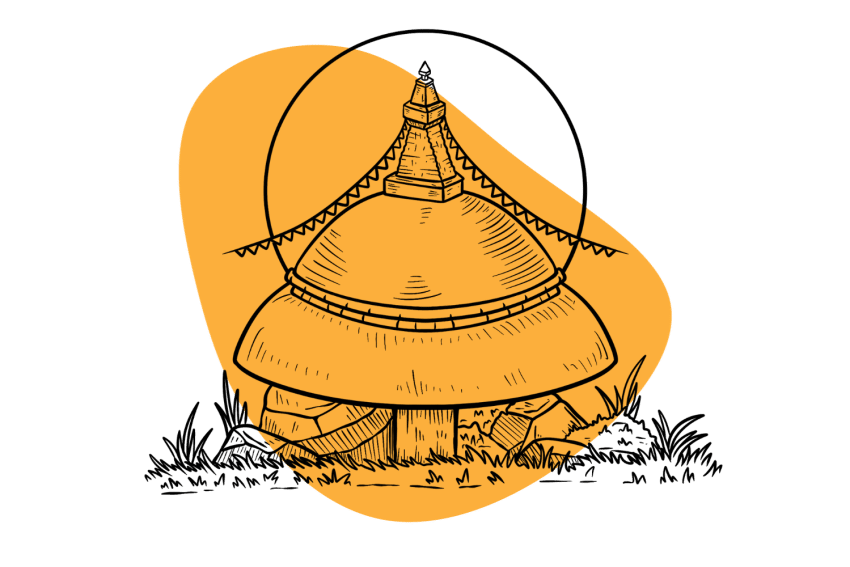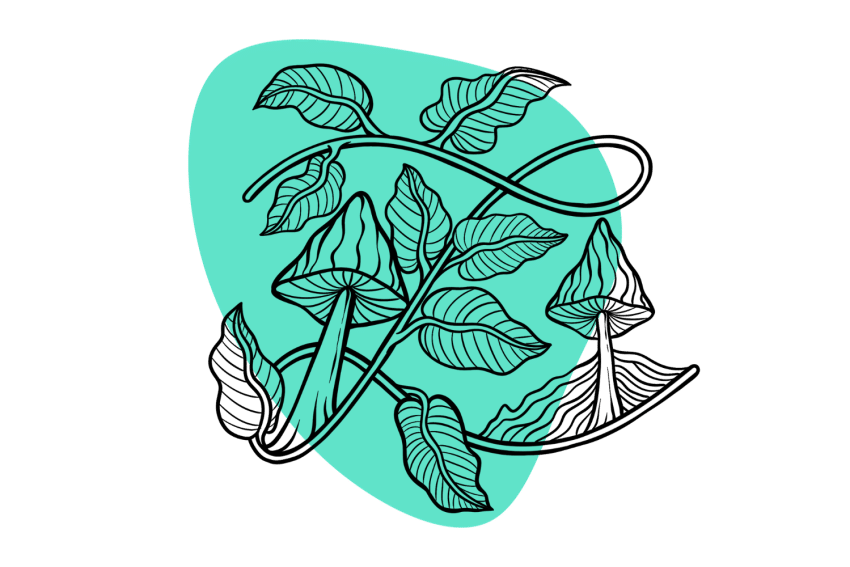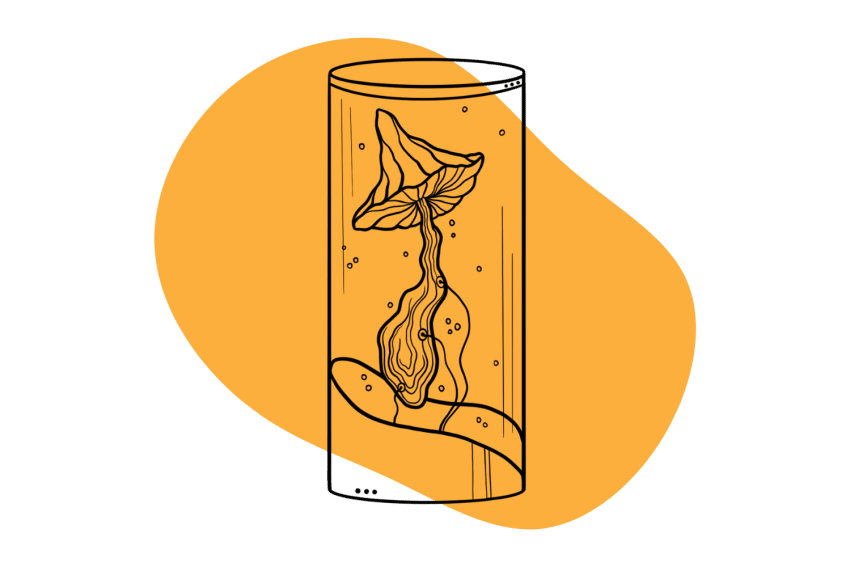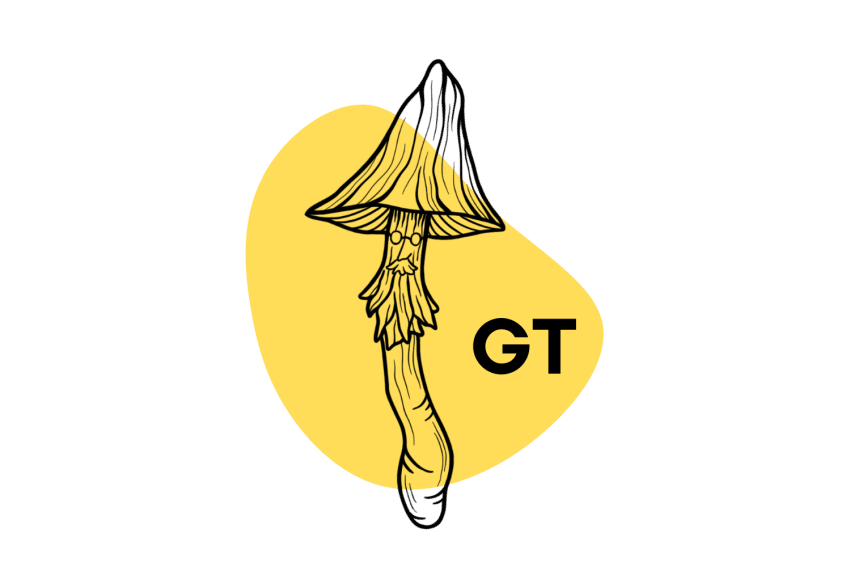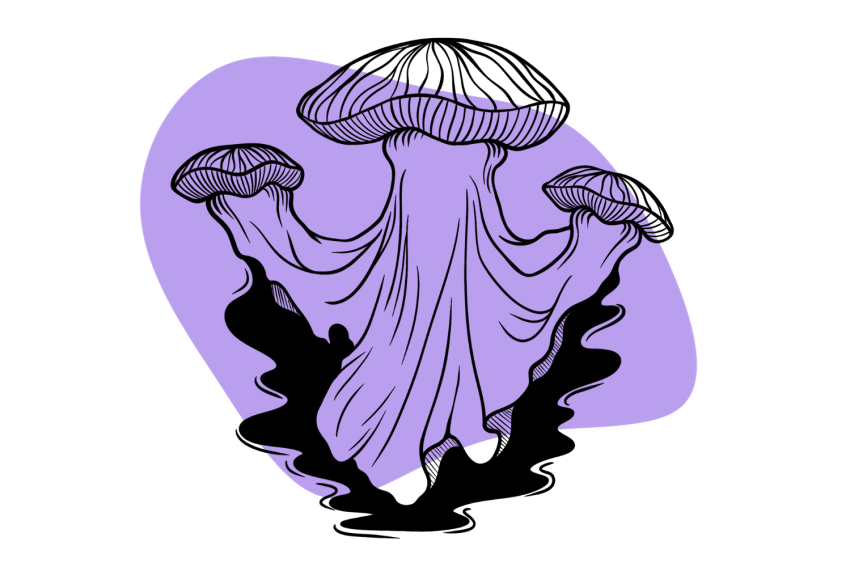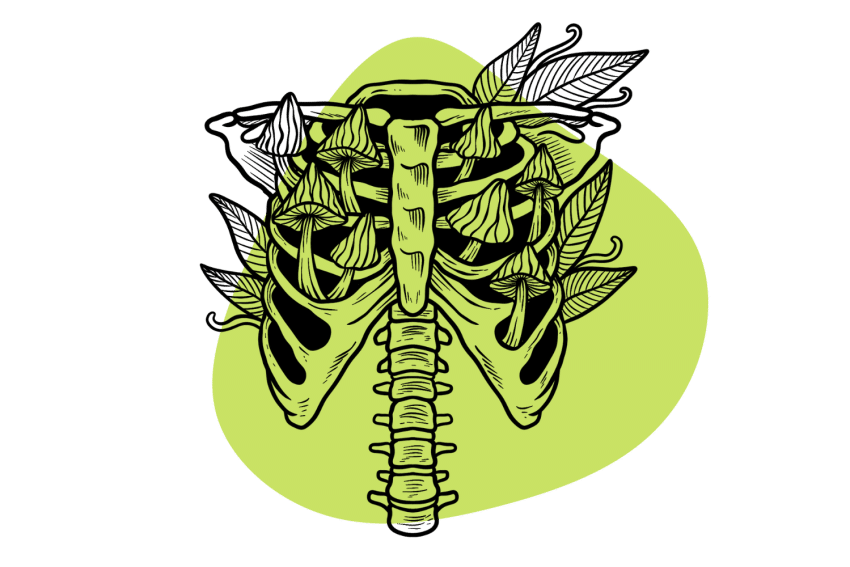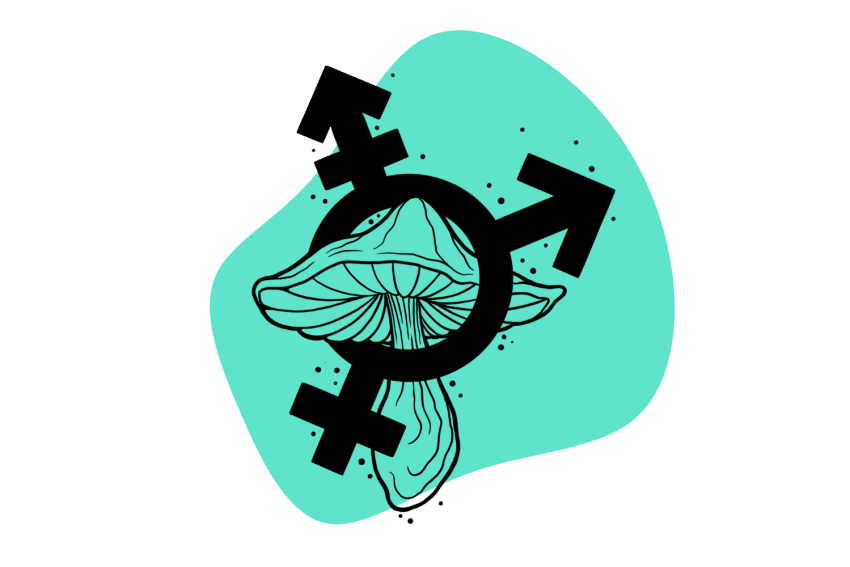The Cambodian Gold Magic Mushroom Strain Fact Sheet
Looking for a strain that’s easy to grow and high-yielding? You should check out Cambodian Gold…
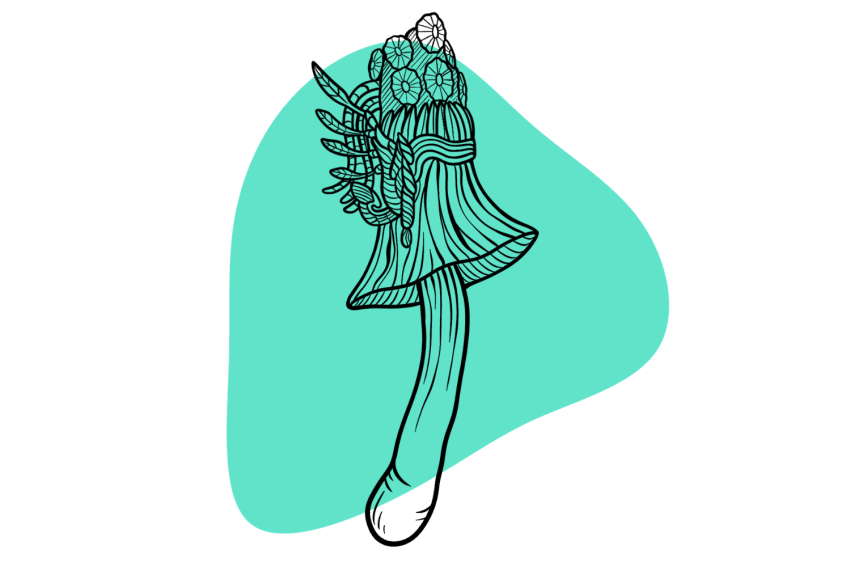
Cambodian Gold is a hybridization of two famously resilient strains — Golden Teacher and the Cambodian strain.
Cambodian Gold shrooms share traits from both of the mother strains. The mushrooms have gold caps and wavy, white stems. They’re larger than Golden Teachers and original Cambodian shrooms.
This strain is well-rounded, providing the best of all worlds. It’s potent enough to induce strong psychedelic experiences at high doses and weak enough to be accurately divided into microdoses. It’s easy to grow, and you can get great yields, even with an unoptimized environment.
Let’s find out more about this strain by looking at:
- The history of the Cambodian Gold strain
- The potency of Cambodian Gold mushrooms
- The Cambodian Gold strain’s genetic relatives
- Where to buy Cambodian Gold spores
- How to grow Cambodian Gold shrooms
- Other easy-to-grow strains of Psilocybe cubensis
I’ll also answer a few frequently asked questions about Psilocybe cubensis and other psilocybin-producing mushroom species.
Cambodian Gold Specs:
| Potency | Average |
| Cultivation | Beginner |
| Species | Psilocybe cubensis |
| Substrate Recommendation | Rye Grain or BRF (Brown Rice Flour) Cakes |
| Cost | $$ |
| Sold By | Planet Spores, Sporeworks, Tatanka, Shiny Spores |
History of the Cambodian Gold Strain
The Cambodian Gold strain is a hybridization of the Cambodian and Golden Teacher strains. We’re unsure who developed this hybrid and where it was created. However, it appeared on the market sometime during the 2010s.
John Allen first collected the original Cambodian strain during his travels through Southeast Asia during the 1990s; the sample was growing close to the temple of Angkor Wat — one of the largest religious temples ever discovered.
The original Golden Teacher train has been circulating the market since the 1980s. It’s one of the most popular and well-known strains of Psilocybe cubensis. The location of its discovery is lost with time. However, the first sample is believed to have come from somewhere in the Gulf region of the United States.
Related: Magic Mushroom Strain Guide (100+ Strains Explained).
Cambodian Gold Strain Potency & Psilocybin Content
The Cambodian Gold strain isn’t winning any awards for potency. Similar to their appearance, Cambodian Gold mushrooms have average potency for a Psilocybe cubensis strain, producing somewhere in the region of 0.60% to 1.20% total tryptamines. These figures are based on data from samples of its two mother strains — Golden Teacher and the Cambodian strain.
Don’t let its mediocre potency put you off — these mushrooms are capable of producing a powerful psychedelic experience at higher doses.
Unfortunately, a Cambodian Gold mushroom sample has yet to be submitted to an Oakland Hyphae Psilocybin Cup, and there’s no exact tryptamine data available online. However, several Cambodian strains and Golden Teacher samples have been entered into the Cup.
The highest-performing Cambodian mushroom sample produced only 0.57% total tryptamines.
The highest-performing Golden Teacher sample produced 1.35% total tryptamines, averaging 0.73%.
The Cambodian Gold Strain’s Genetic Relatives
The Cambodian Gold Strain has two close relatives that comprise its genetic profile.
Here’s a rundown on its two mother strains:
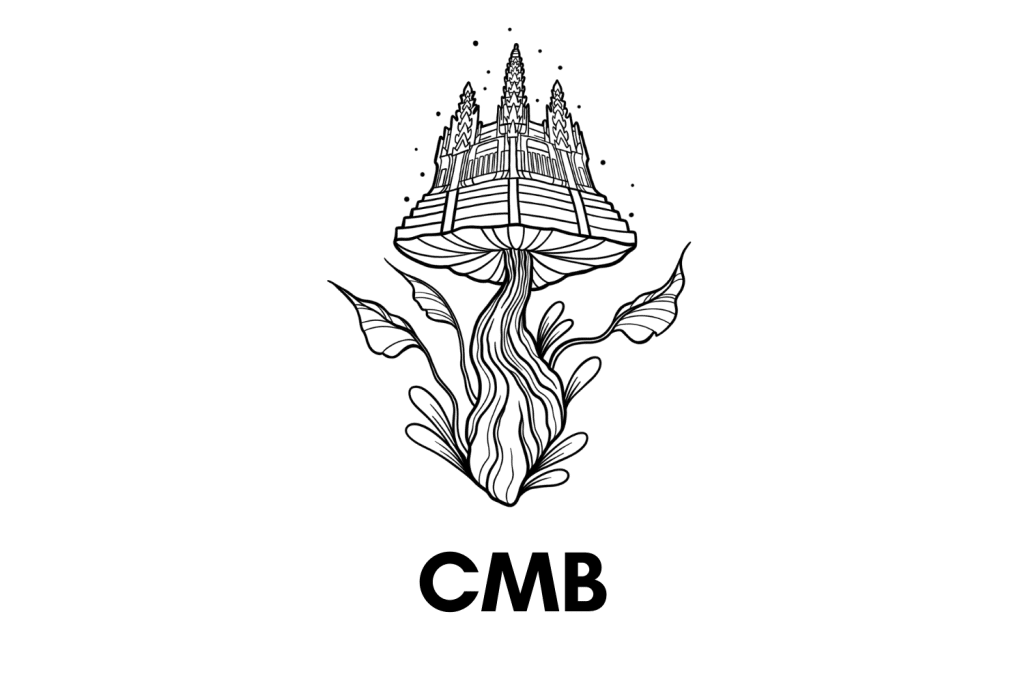
1. The Cambodian Strain
The Cambodian strain is notorious for producing dense flushes. It’s highly resistant to contamination and can thrive in an unoptimized growing environment. It’s the ideal choice for beginners, commercial growers, and those looking to produce a large number of mushrooms quickly.
The first Cambodian mushroom sample was discovered by the legendary mycologist and mushroom hunter “John Allen” during his travels through Southeast Asia in the 90s. The specimen was supposedly found growing close to the famous temple of Angkor Wat in Cambodia.
With low potency — producing an average psilocybin level of 0.45% — this strain isn’t winning any awards. However, the enormous yield potential makes up for this.
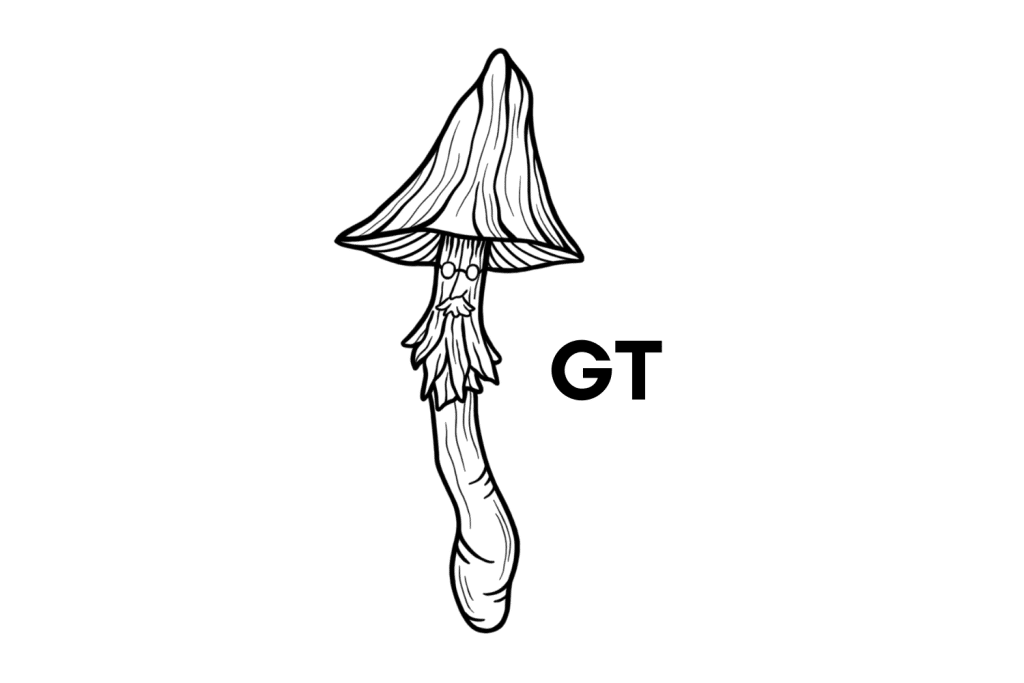
2. Golden Teacher
Golden Teacher is one of the most popular and famous strains of Psilocybe cubensis on the planet. It’s possibly one of the easiest and most fool-proof strains to grow, making it the perfect choice for the beginner to mushroom cultivation.
Golden Teacher Spores have been circulating the market since the 1980s, but we don’t know its origins. It’s believed that the original sample was collected from somewhere in the Gulf region of the United States.
As with all magic mushrooms, the potency levels of Golden Teacher shrooms vary. Test samples show that the strain has an average psilocybin level of 0.66% and a total tryptamine level of 0.73%.
Where to Buy Cambodian Gold Spores
Cambodian Gold Spores can be difficult to find. However, a couple of reliable spore vendors stock the genetics.
Here’s where you’ll find Cambodian Gold spore samples in your area:
- Canada: You’ll find Cambodian Gold spore syringes for sale at Planet Spores.
- The United States: Cambodian Gold spore syringes are available from Sporeworks.
- Europe: Cambodian Gold spore syringes, prints, and vials can be purchased from Tatanka.
- The United Kingdom: You’ll find Cambodian Gold spore syringes for sale at Shiny Spores.
How to Grow Cambodian Gold Mushrooms
Thanks to the strain’s genetics, Cambodian Gold mushrooms are easy to cultivate, even for beginners. Its mother strains are renowned for their resilience to temperature fluctuations, contamination resistance, and ease of cultivation. These traits make Cambodian Gold perfect for beginners.
The strain is contamination-resistant and can cope with an unoptimized growing environment, making it approachable for cultivators of all skill levels.
The Cambodian Gold strain grows well on most substrates, but we recommend rye grain or a mixture of brown rice flour, water, and vermiculite to form a medium known as “BRF cakes.”
The easiest way to cultivate this strain — and most P. cubensis strains, for that matter — is to use a method known as the Psilocybe Fanaticus Technique (PF Tek for short).
This cultivation technique requires very little equipment and a minimal investment of time, knowledge, and money.
Learn how to cultivate Cambodian Gold shrooms using PF Tek: How to Grow Magic Mushrooms: The Easy Way.
Does all of this sound somewhat complicated? Check out: The Top 5 Magic Mushroom Grow Kits.
Other Easy-To-Grow Strains of Psilocybe cubensis
The Cambodian Gold strain is ideal for beginner growers because it’s easy to get successful results in an unoptimized environment. However, there are more beginner-friendly, easy-to-grow strains out there.
Here are six options if you’re looking for an easy-to-grow strain of P. cubensis:
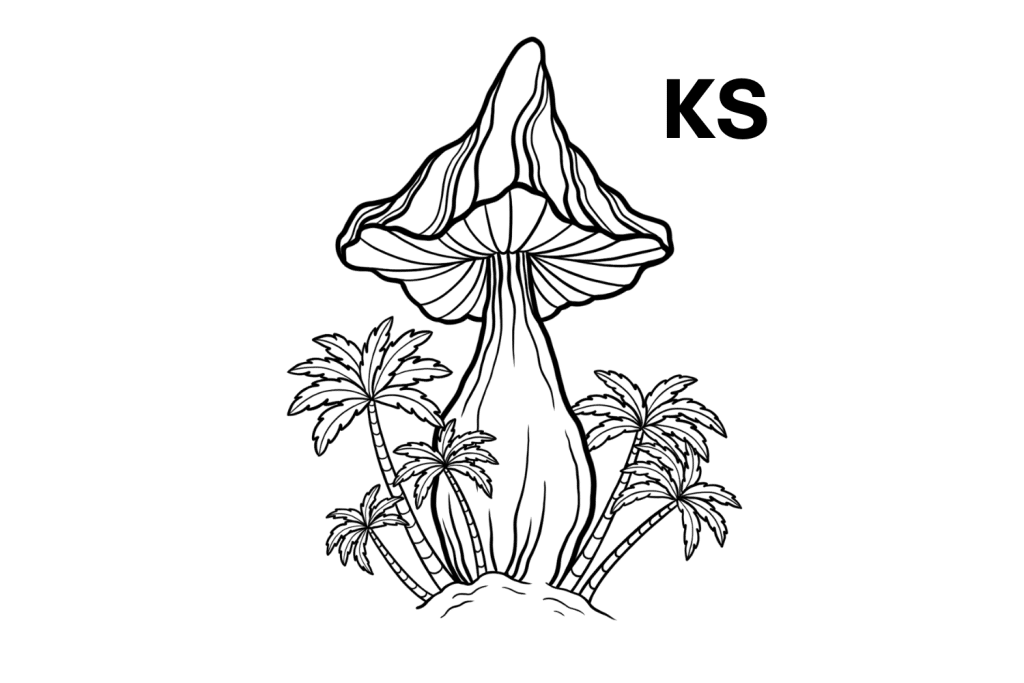
1. The Koh Samui Strain
The Koh Samui strain is a popular Thai strain with above-average potency. It’s famous for producing “fatasses” — short mushrooms with thick stems.
John Allen collected this strain during his travels through Southeast Asia in the 1990s. The original sample was found growing on the island of Koh Samui — hence the name. Like most Southeast Asian strains, this one is remarkably resistant to contamination and is an aggressive colonizer.
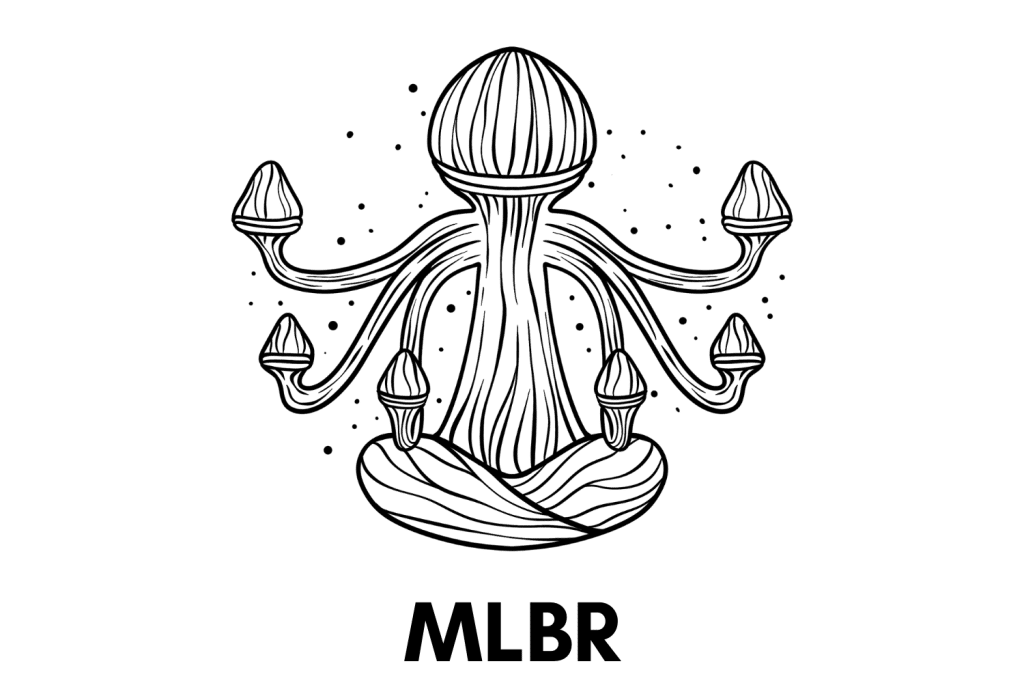
2. Malabar India
The Malabar India strain is loved because of its ability to produce some impressively large mushrooms. Similar to the Orissa India strain, there are reports from some cultivators of single Malabar mushrooms weighing over 250 grams fresh.
We’ve rated this one as “above average.” From test samples entered into the Oakland Hyphae Psilocybin Cup, we found a combined average of 0.90% (psilocybin and psilocin).
The Malabar India strain is easy to cultivate and gives good yields over several healthy flushes thanks to its contamination resistance and aggressive nature.
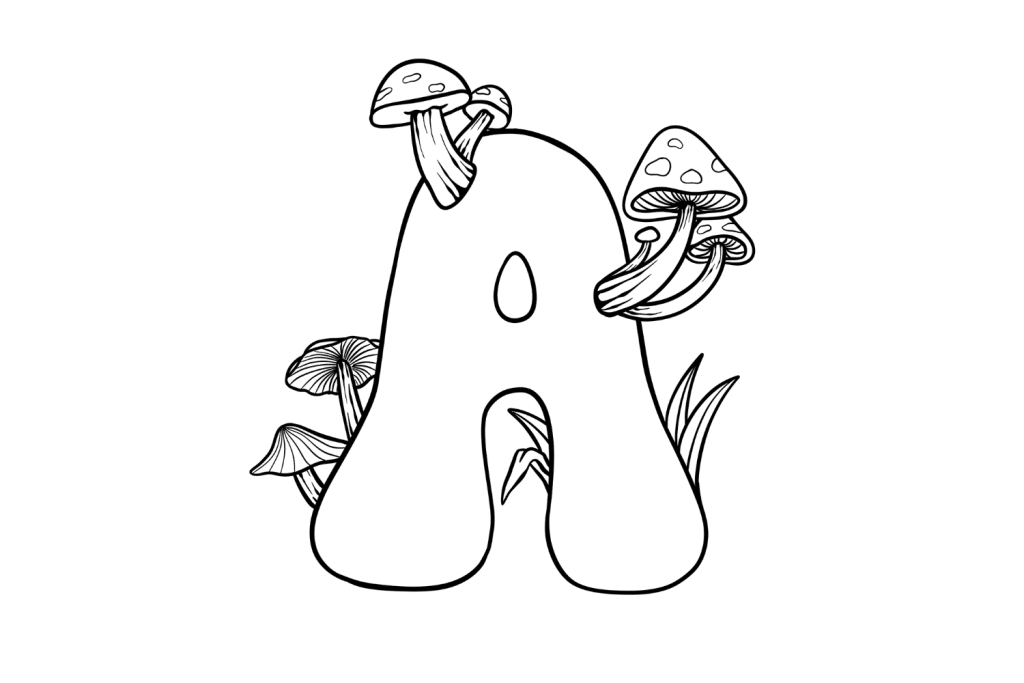
3. A+ Strain
The A+ Strain (often called A-Strain) is an O.G. strain of P. cubensis that’s incredibly easy to cultivate. The famous mushroom breeder and frequent Shroomery user “Mr. G” developed this strain.
A+ is famous for its heavy spore production, making it the perfect option for collecting spores for mycology or reproduction. It’s known for producing large mushrooms with pale yellow caps. Potency is above average (1.2–1.8% total tryptamines).
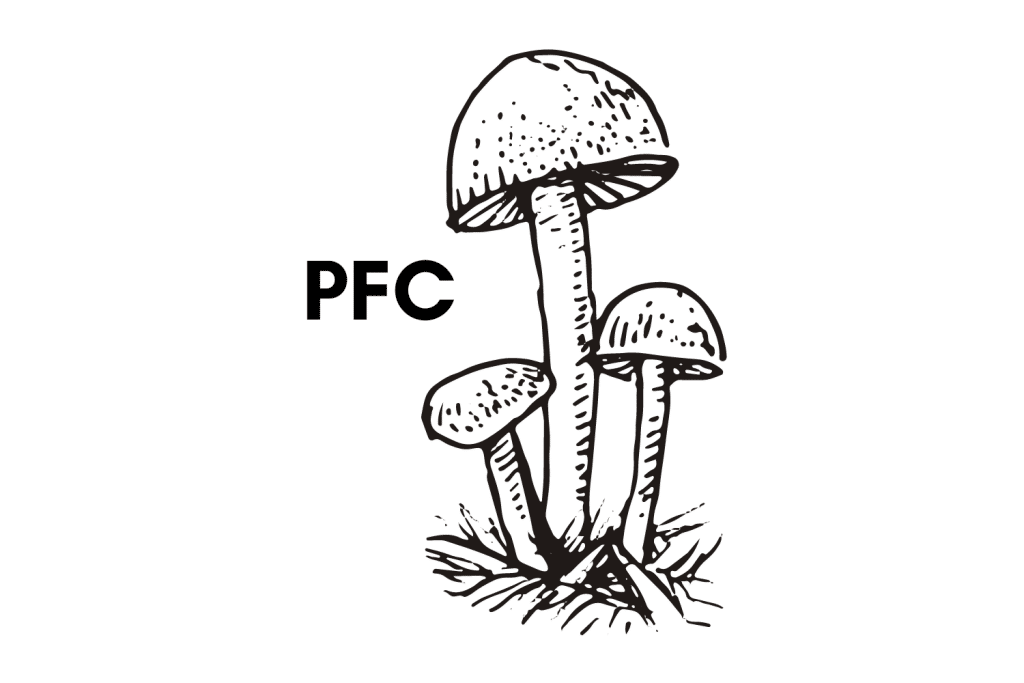
4. P.F. Classic
The P.F. Classic strain is another O.G. strain that’s easily cultivated. This strain was developed by the legendary “Professor PF” for use with his groundbreaking cultivation technique, “PF Tek.”
This strain is famed for having a longer maturation time — meaning it takes longer for the mushrooms to drop their spores during cultivation. The shrooms are medium-sized and fairly average in terms of potency, with an average tryptamine percentage of 0.67%. However, they’re easy to cultivate, and yields can be fruitful.

5. B+ Strain
The B+ strain is another classic developed by “Mr. G.” This strain is supposedly a hybrid of two species — Psilocybe cubensis and Psilocybe azurescens. However, this is highly unlikely as these two species wouldn’t produce viable offspring.
Regardless of this speculation, the B+ strain is ideal for beginners due to its contamination and temperature resistance, as well as its ability to colonize pretty much any substrate incredibly quickly. Potency is pretty average, producing around 0.59% psilocybin (0.73% total tryptamines).
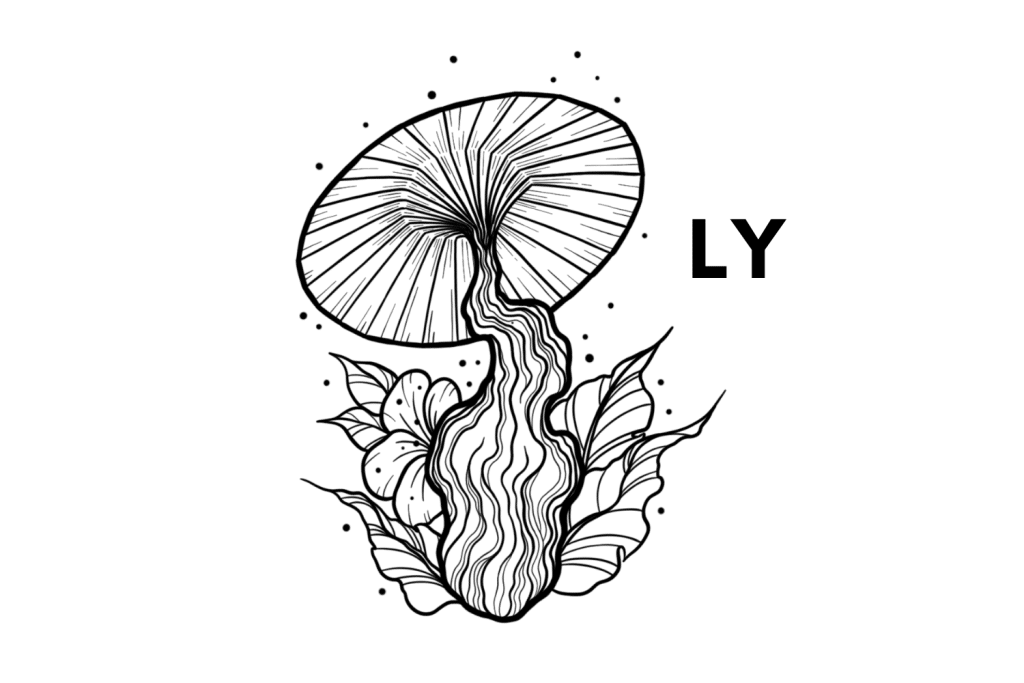
6. The Lipa Yai Strain
Another Thai strain that’s easily cultivated, the Lipa Yai strain, is similar to the Koh Samui strain but produces tall, slender fruiting bodies rather than the short, fast fruits associated with K.S. It shares similar potency — delivering an average psilocybin level of 0.66% — and has the same contamination-resistant qualities.
This is a popular beginner strain for those who want to produce large numbers of mushrooms. Although Lipa Yai shrooms weigh less than Koh Samui shrooms, the strain can have several remarkably dense flushes.
Frequently Asked Questions
Still curious? I’ll answer some of our most-asked questions.
1. How Many Strains of Psilocybe cubensis Come from Southeast Asia?
There are over 100 different strains of Psilocybe cubensis that originate from several different countries across the globe. Some regions, such as North America and Southeast Asia, seem to teem with P. cubensis shrooms — over 50 strains have been collected from these regions.
Many other strains have been collected from Southeast Asian countries, such as Vietnam, Cambodia, and Thailand. These strains are usually famed for their incredible resistance to contamination, aggressive colonization habits, and dense flushes.
Here are some of the most famous Southeast Asian strains on the market:
- The Allen Strain
- The Koh Samui Strain
- The Lipa Yai Strain
- The Ban Thurian Strain
- The Ban Hua Thanon Strain
- The Ban Phang Ka Strain
- The Ban Lamai Strain
- The Ban Nathon Strain
- The Cambodian Strain
- The Cambodian Gold Strain
- The T3 Strain
- The Pink Buffalo Strain
- The Thai cubensis strain
- The Tak Mountain Cube Strain
Related: List of Psilocybin Mushroom Species (And Other Psychoactive Fungi)
2. Where Are Psilocybe cubensis Mushrooms Typically Found?
Psilocybe cubensis is the most prevalent magic mushroom species on Earth. This species grows on five (maybe six) of the seven continents.
It’s a pan-tropical species that grows in several countries across the globe, primarily in pastures and open grassland. It often grows in and around livestock manure but also on nutrient-rich ground without grazing animals.
In most countries, P. cubensis shrooms pop up between August and November, but fruiting can begin as early as January or February in warmer, more tropical climates.
You’ll find Psilocybe cubensis mushrooms growing in these countries:
- Argentina
- Australia
- Barbados
- Belize
- Bolivia
- Brazil
- Cambodia
- Colombia
- Costa Rica
- Cuba
- Dominican Republic
- Fiji
- French Guiana
- Guadalupe
- Guatemala
- Hawaii
- India
- Jamaica
- Malaysia
- Martinique
- Mexico
- Nepal
- New Zealand
- Paraguay
- Peru
- Southeastern United States Gulf Coast states
- Tasmania
- Thailand
- Trinidad
- Uruguay
- Vietnam
There are likely many other countries where P. cubensis grows naturally. However, these are the recognized countries where samples have been discovered and documented.
3. What’s the Easiest Strain of Psilocybe cubensis to Grow?
Psilocybe cubensis is relatively easy to cultivate as a species, even for complete newcomers to mushroom cultivation. However, some strains are more difficult to grow than others.
The easiest to cultivate at home is, without a doubt, the Golden Teacher strain. It’s a popular choice for beginner growers because it’s highly resilient to contamination and can be grown in an unoptimized environment.
Golden Teacher isn’t the only easy strain to grow. Here are a few more beginner-friendly strains:

